GreenPan Omni Cooker: one pot cooking at its finest
If you like to keep your cooking soup-er simple, you'll love this

The GreenPan is the perfect slow cooker. It's coated in natural, ceramic non-stick, can cover a range of functions, and executes all of them exceptionally well. The control panel feels like a step back in time, but you get used to it.
-
+
Slim and sleek design Good across a range of functions Large capacity for cooking Speedy to heat up and cook Ceramic non-stick coating avoids concerns for toxicity
-
-
Crude control panel can be frustrating
You can trust Homes & Gardens.

Over the last year, I've seen a huge increase in the demand for non-toxic kitchenware and a place I’ve been able to turn to, time and time again is GreenPan.
The best slow cookers deliver on form and function, but they also need to offer something different to the norm. In the case of GreenPan's Omni Cooker, their ceramic non-stick coating, immense capacity, and sleek design mean that they stand out from the masses.
The Omni Cooker has quickly become one of my favorite kitchen appliances. I tested it on its steaming, stir-frying, sauces, and sautéing. It's easy for one-pot cooking and you don't need to worry about a tough clean-up, thanks to the effective non-stick.
Specifications

| Dimensions | H8.5” x W13.7” |
| Weight | 10.25 lbs |
| Temperature | 446°F |
| Power | 2,200 W |
| Modes | stir fry, sauce, soup, steam, summer, sear and saute, white rice, brown rice, grains, and warm |
| Color | black, stainless steel, coated steel, cream |
| Material | Copper-plated iron, aluminum, ceramic aluminized plate |
Unboxing
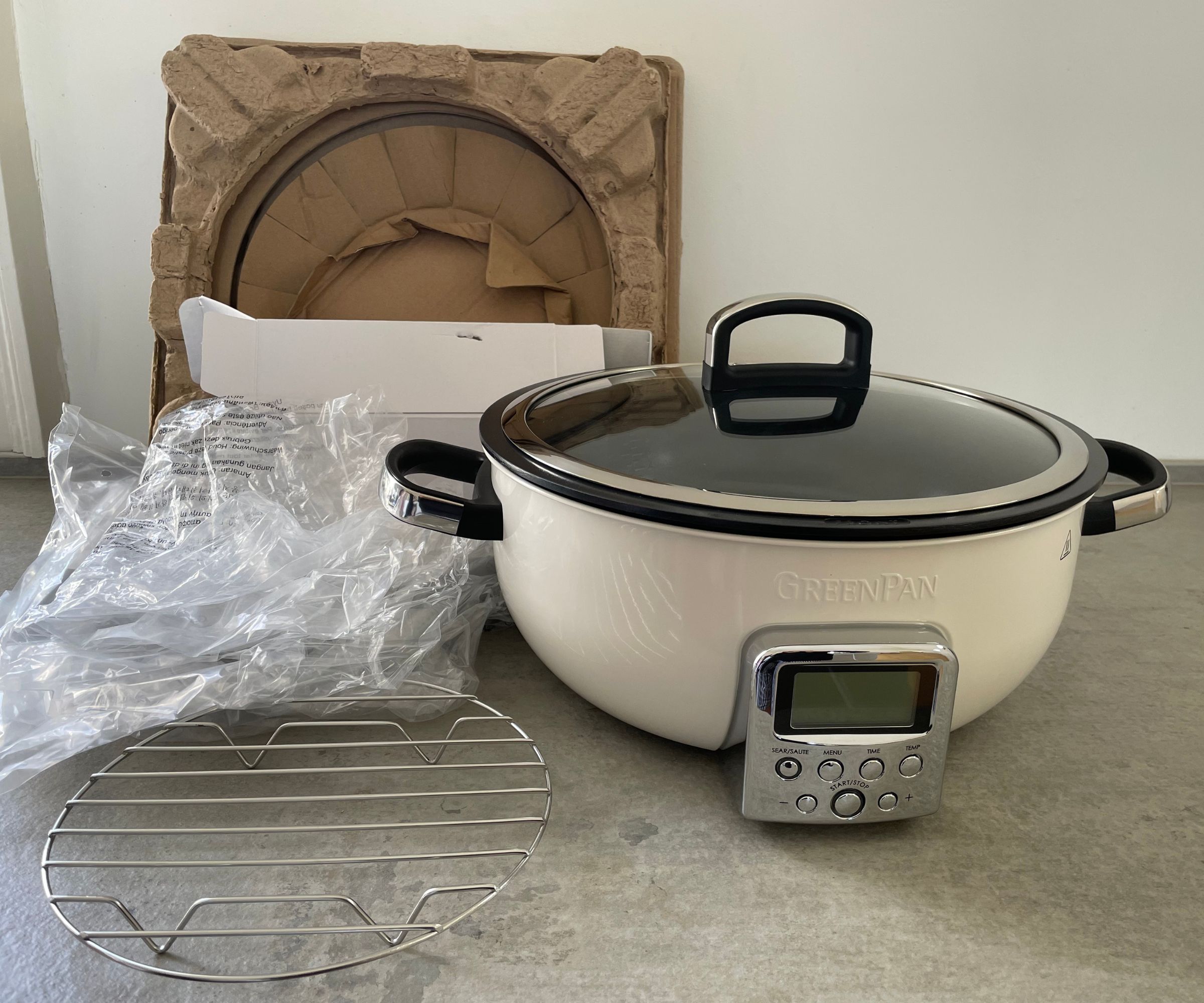
The packaging from GreenPan is everything you would expect from an eco-conscious brand. Everything was cardboard, so easy to flatten and dispose of. There were some soft plastics around the lid and the slow-cooking rack to prevent them from scratching the pan in transit. You can still recycle soft plastics, but you might need to work a little harder to find points that will accept them.
On the countertop, the GreenPan looked surprisingly attractive. I tested one in cream: it was slim, modern, and simple. I normally think of slow cookers as a bit of an eyesore, but this looked good.
Who would it suit?
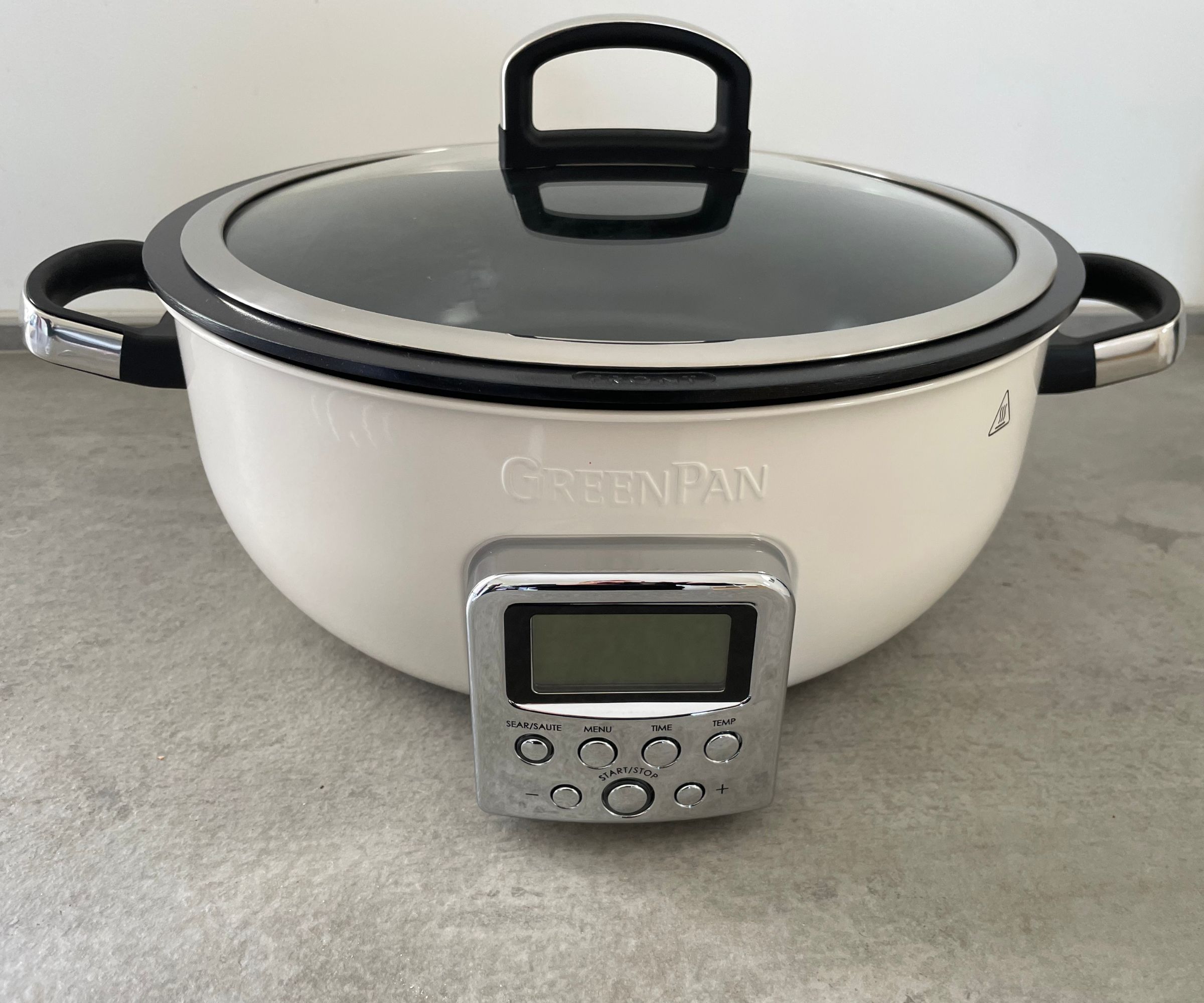
The GreenPan is perfect for people who want easy, one-pot cooking. This is quick, simple, and the pre-sets and programs mean that you can make a range of dishes without needing to stand by the slow cooker all day.
If you’re a big, busy household, you’ll make great use of the GreenPan. It’s versatile enough to cover a range of functions. However, if you already have crowded countertops and a good pressure cooker, the overlap between these appliances will likely render your Greenspan useless.
Design expertise in your inbox – from inspiring decorating ideas and beautiful celebrity homes to practical gardening advice and shopping round-ups.
What is it like to use?

The GreenPan is super simple. The menu lets you toggle between pre-sets, temperature, and timer settings. It’s a very simple control panel, which is great, but if you scroll past the temperature you want, you’ll have to go back to the beginning and navigate back to it. This can be frustrating, but it's a small inconvenience against how useful the GreenPan is.
The main reason I wanted to test the GreenPan is because I had heard that this is great for rice cooking. This meant testing it for making fluffy white rice and tender brown rice. I tested cauliflower rice too, but we’ll keep that in another section.
There’s a dedicated pre-set for brown rice, so I started off trying to make enough for five people. That seems like a reasonable ask and a good test of the GreenPan’s capacity. The pre-set suggested that the brown rice would need an hour to cook, which seems long to me, but I know rice cookers take a low and slow approach more than we might on a hob.
When I came back to check on my rice after the hour, I could see that all the water had been absorbed. I did a quick taste test and it was perfect. There was enough texture to give the rice some bite, but it was still tender and well-cooked. It was a great success.
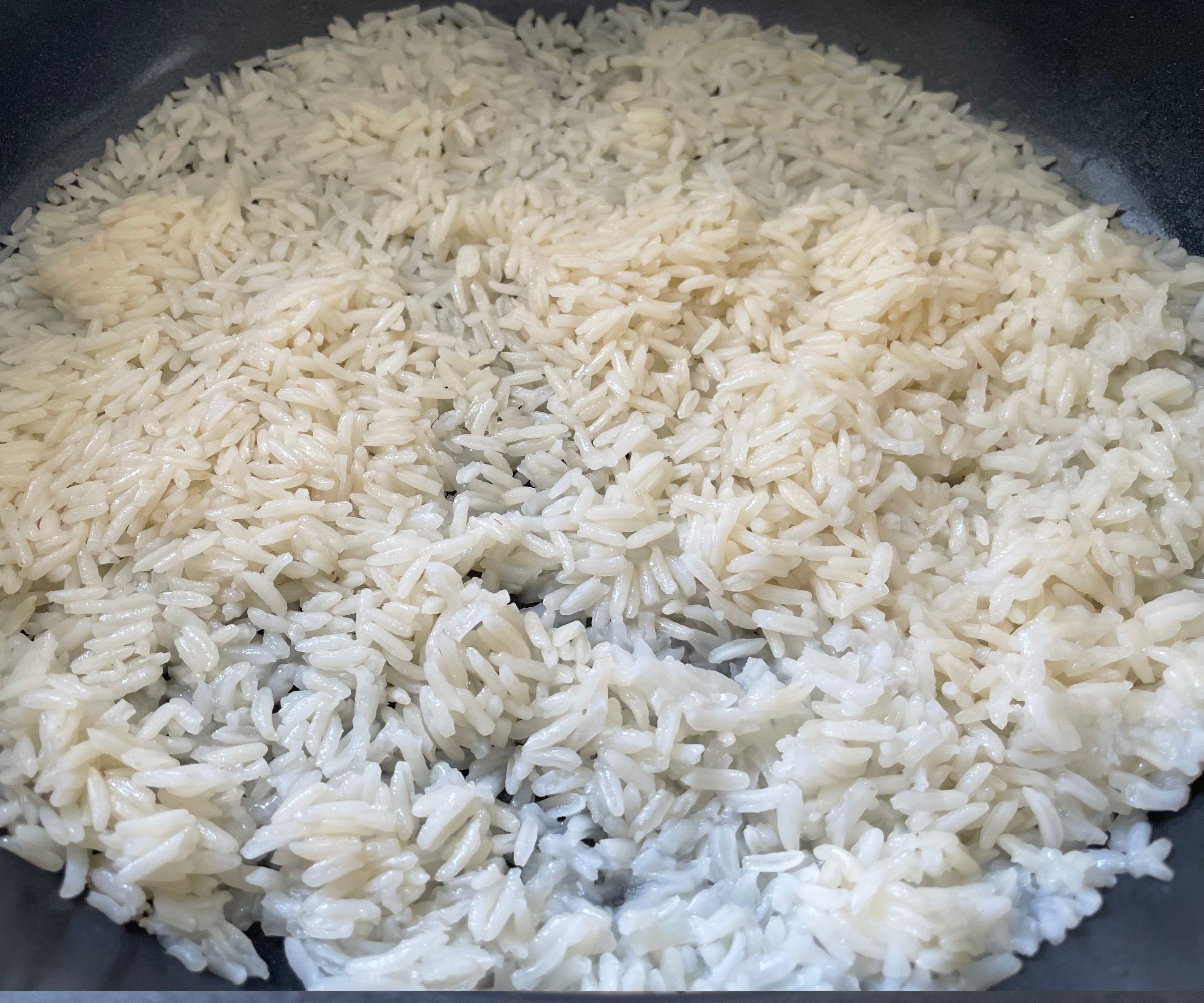
Given the success of the brown rice, I had high hopes for my white rice. I tried a smaller serving this time, but my pre-set still suggested that this would take twenty minutes. I let the GreenPan run as it would on the preset and when I checked after twenty minutes, it looked light and fluffy. If I'm being picky, I think the rice was on the stodgy side of fluffy, it would have tasted like perfection at around sixteen minutes in my opinion, but this was still enjoyable.
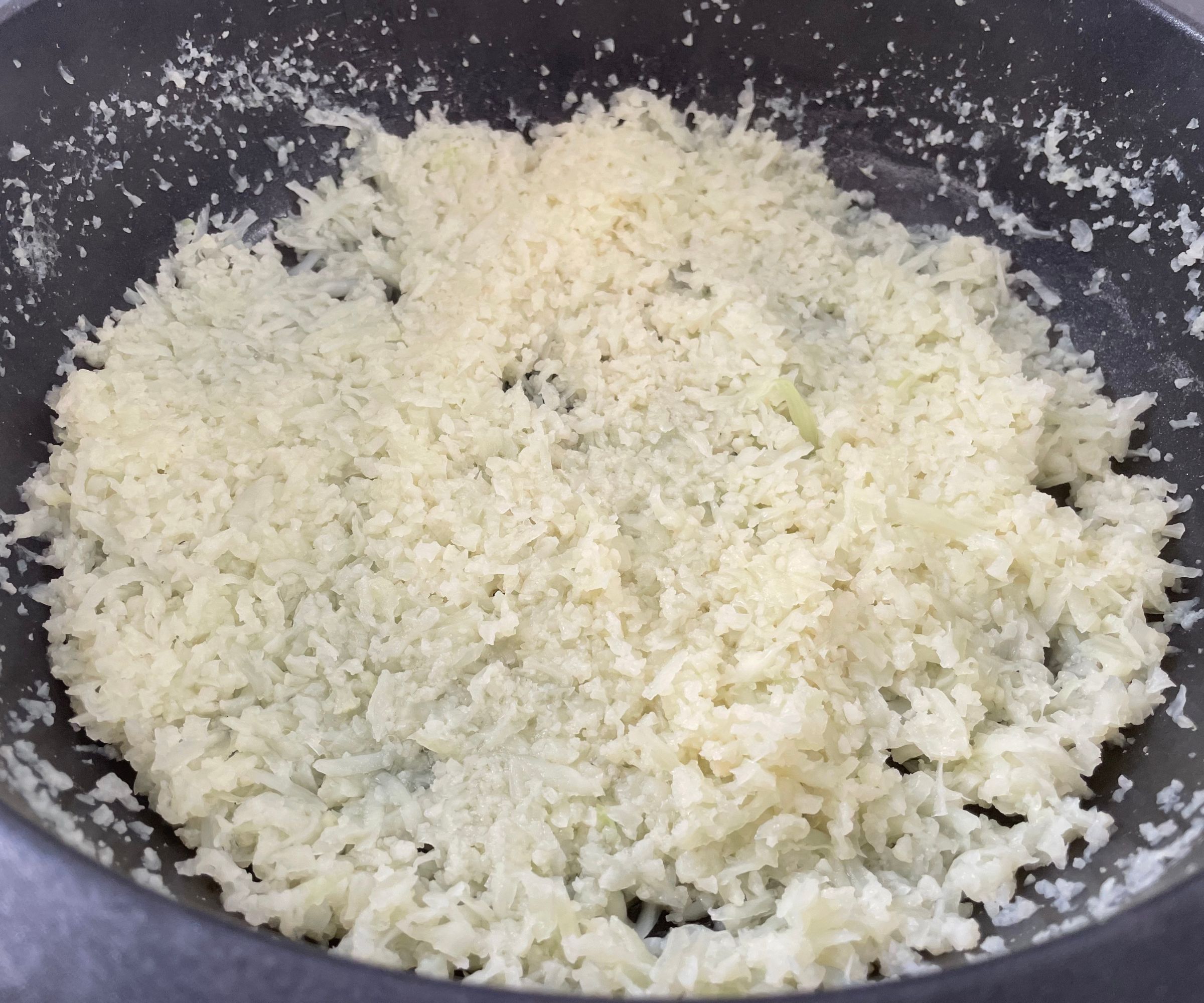
I mentioned cauliflower rice in the section above too. This requires a slightly different approach to cooking. Cauliflower rice needs to be gently steamed for about five minutes. There’s no pre-set for cauliflower rice, but there is for steaming. I toggled the time to five minutes, added my cauliflower rice (with a spoon of coconut oil) and set the GreenPan running. When I lifted the lid, at the five minute mark, I was really pleased. The cauliflower rice was perfect, some of the best I’ve made. It was plump, tender, and perfectly steamed.
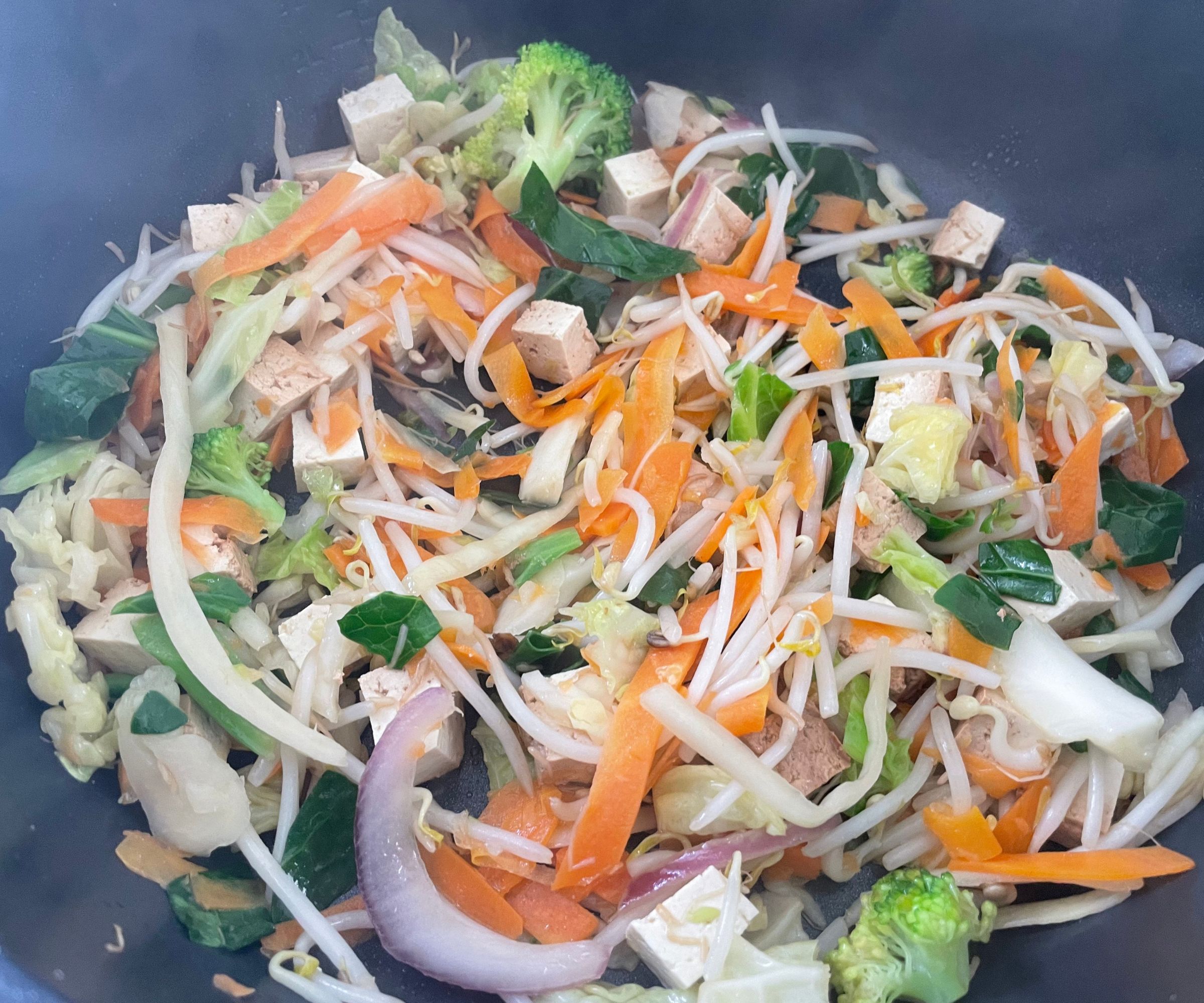
One of the many settings on offer with the GreenPan is stir fry. I wanted to test this because it saves you from using and having to re-oil your wok, if it works. I drizzled some oil into the pan and fried some tofu using the stir fry setting. The pre-set temperature was useful for getting the pan hot quickly, but the timer wasn’t quite as useful because it didn’t factor in cooking tofu and then stir-fried vegetables.
The wide base of the pan sizzled my tofu nicely, browning all the outside, and crisping it up. When I was happy with them, after just under five minutes, I poured in my stir fry vegetables. Normally, my wok is full with a family-sized bag of vegetables, but the wide, slim GreenPan had enough surface area for all my vegetables. They were getting heated at the same time so I didn’t need to devote quite as much energy to stirring everything around in the pan as I would normally.
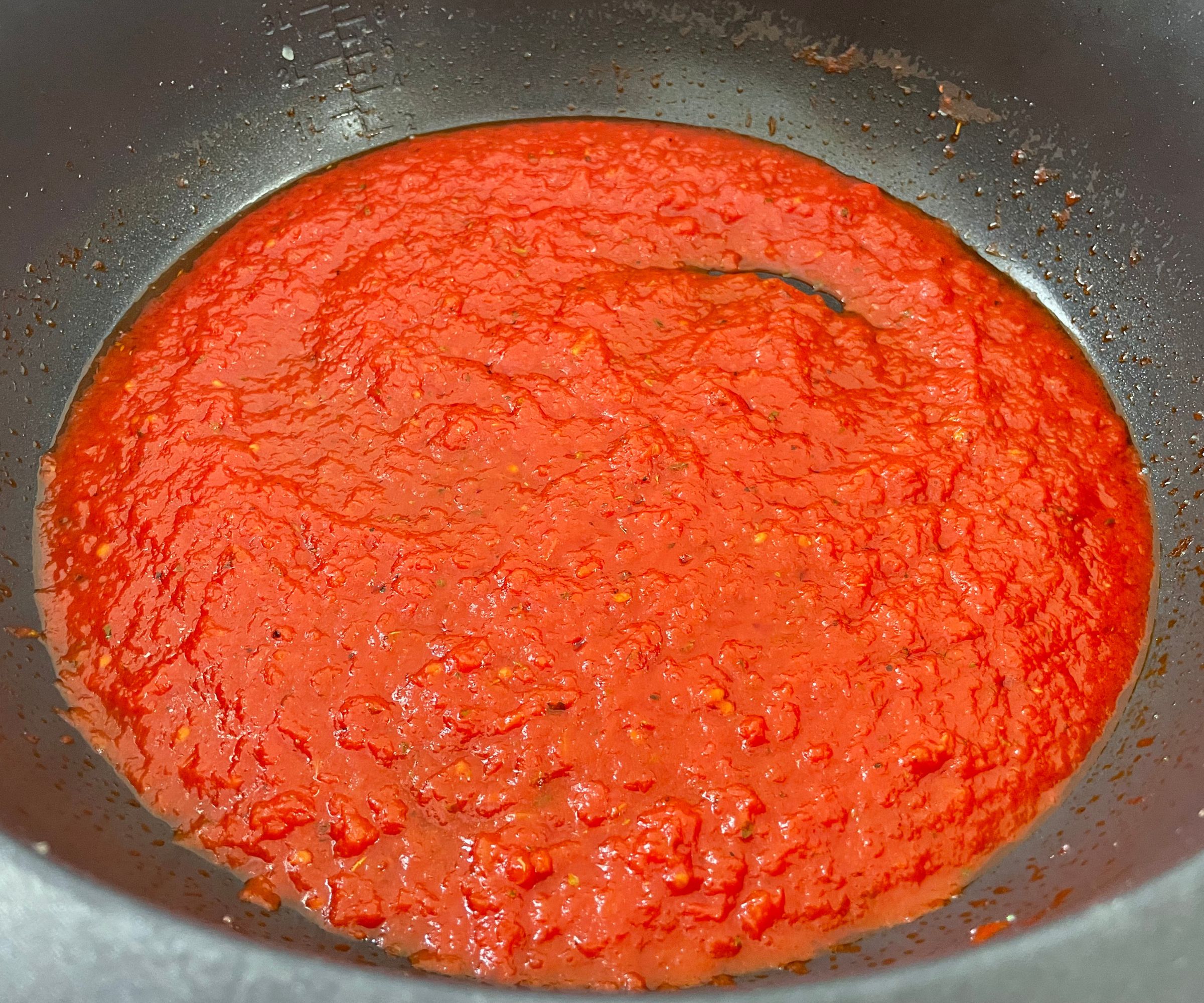
There’s also a sauce setting, which slowly simmers gravies, tomato sauce, barbecue sauces, and more. I decided to make a tomato sauce, the kind that I could use for pasta and pizza bases.
The sauce setting does a rapid, high preheat before it lets you add your liquids. With a good dose of GreenPan experience, I realized that I could use this to fry my garlic for the base of the sauce. You get about two minutes of super hot temperatures, which was enough to give my chopped garlic some color. Next, I added a tin of chopped tomatoes, a glass of red wine, some tomato puree, oregano, salt, pepper, and sugar. It was quite a fluid sauce, so I wasn’t sure I could get it to thicken enough to make a good pizza base. However, with the lid off and ten minutes, bubbling away, the fluid tomatoes transformed into a deliciously thick base.
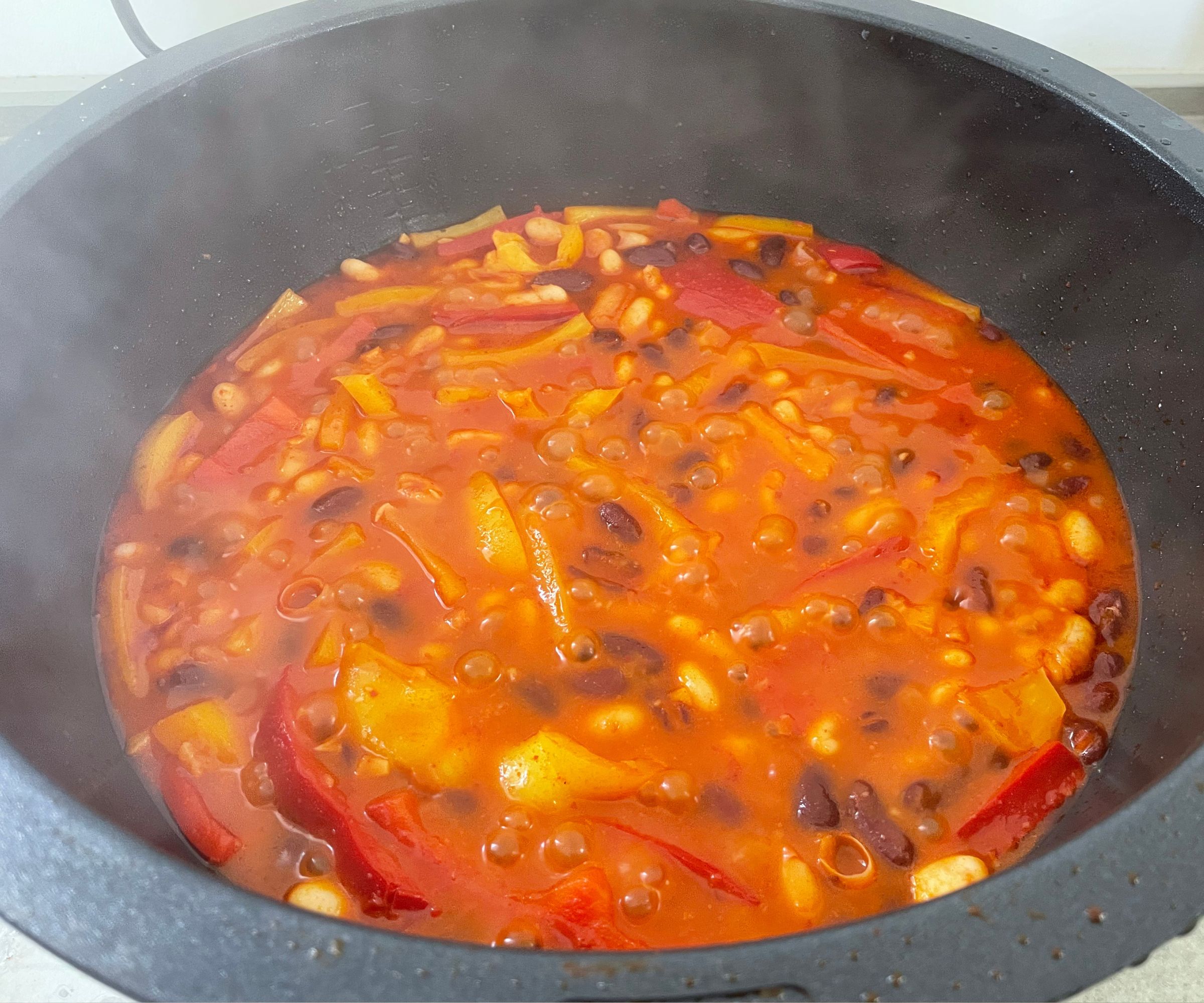
There’s also a stew function, so I gave my best three bean stew a test run in the GreenPan. This test is pretty simple, but I thought I’d see just how many steps I could incorporate into the pan (if I can cut out some washing up, I’m always happy.)
First, I used the pre-heat blast to flash fry some garlic and peppers. Then, once the pan was up to temperature, I added tomato paste, chipotle paste, a stock cube, and some chopped tomatoes. I reduced the mixture before adding a tin of cannellini beans and a can of kidney beans.
I left the pot to simmer for ten minutes. Here's where the timer was really useful because I set the GreenPan to turn off after ten minutes. With the lid on and the pre-set running, I didn’t need to do anything else. The stew took care of itself and, when I returned to the pot, my beans were cooked right through (without splitting and overheating) and the sauce had thickened nicely.
Cleaning, storage, and maintenance
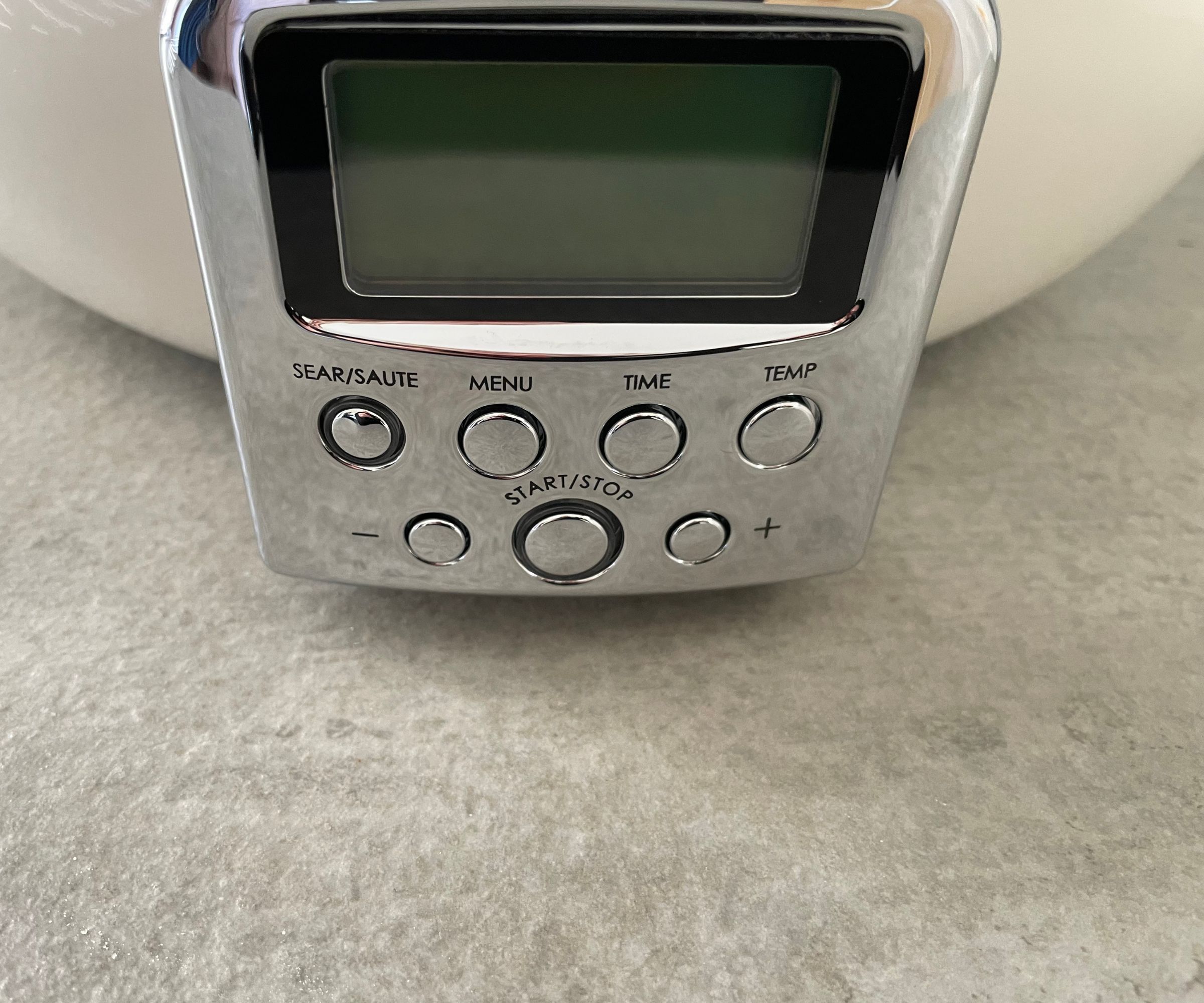
The GreenPan's inner ceramic bowl is dishwasher safe, which is a Godsend if you tend to steer clear of the sink. The outer bowl didn't get dirty in any of my tests, but you could easily wipe this clean.
My word of warning with any non-stick, not just ceramic, is to avoid stainless steel kitchen utensils or anything that might scratch your non-stick. It doesn't pose quite as much of a concern to your health if you scratch your ceramic non-stick (compared to Teflon and other plastic non-sticks), but it will make your GreenPan harder to clean longer-term.
The non-stick was generally effective. Even when I scorched some garlic on the sides, it all wiped away easily in the sink.
How does it rate online?
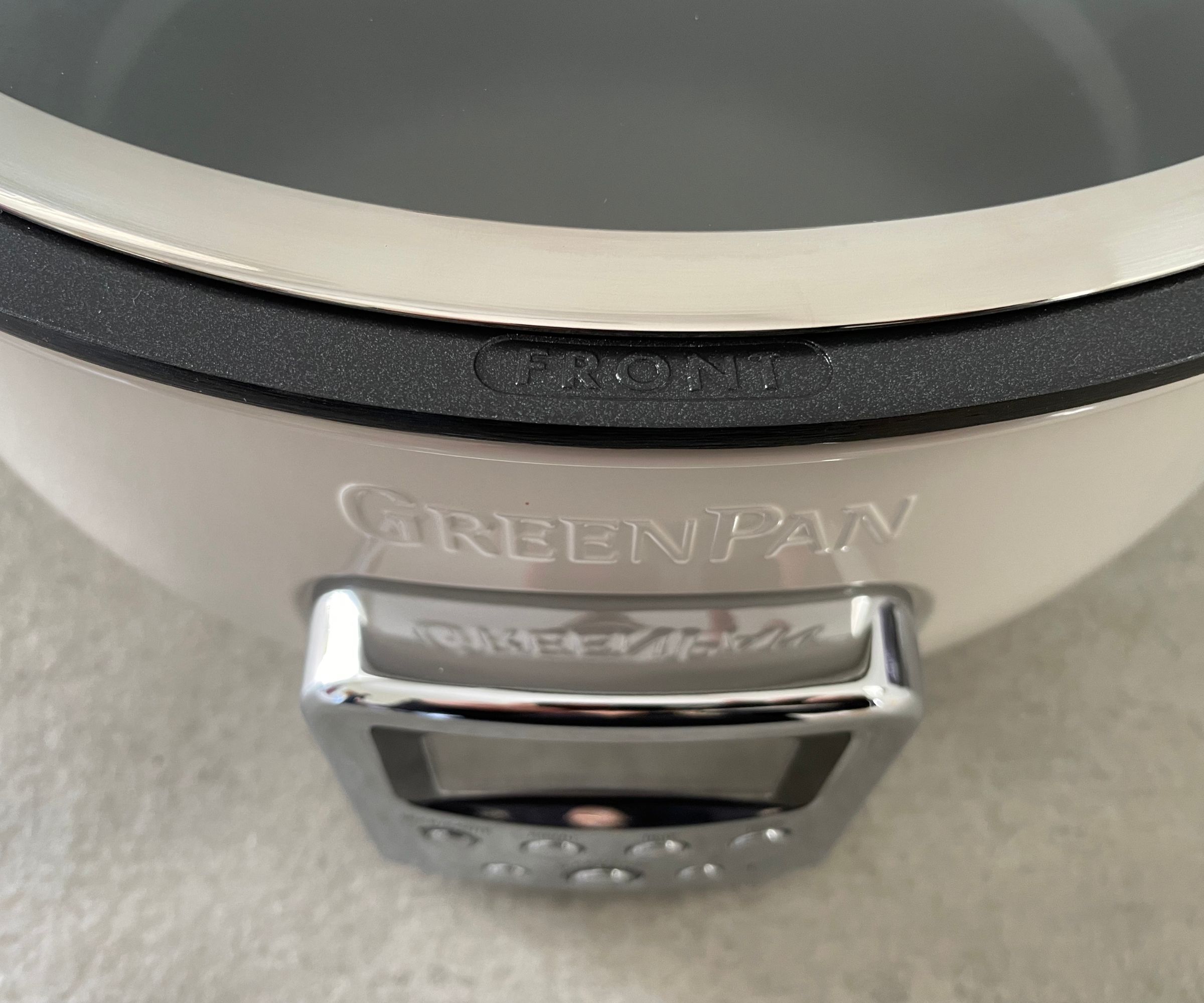
The GreenPan has great reviews. People love the effective, natural ceramic non-stick, so I found a lot of buying guides and reviews for non-toxic appliances that put this at the top of their lists. The whole clean-up process got a lot of praise in reviews, but that's not the only thing that people liked.
The GreenPan's eight functions are another highlight. People enjoyed its versatility as well as the keep warm function.
If people did criticize the GreenPan, it was on two features. The first is size. Even though this is slim and attractive, it's quite wide. Large homes with slim surfaces might struggle to make space for it. Some people also found that you need to dial-in to the functions. I found the same with my white rice. The pre-sets are useful but worth keeping an eye on.
How does it compare?
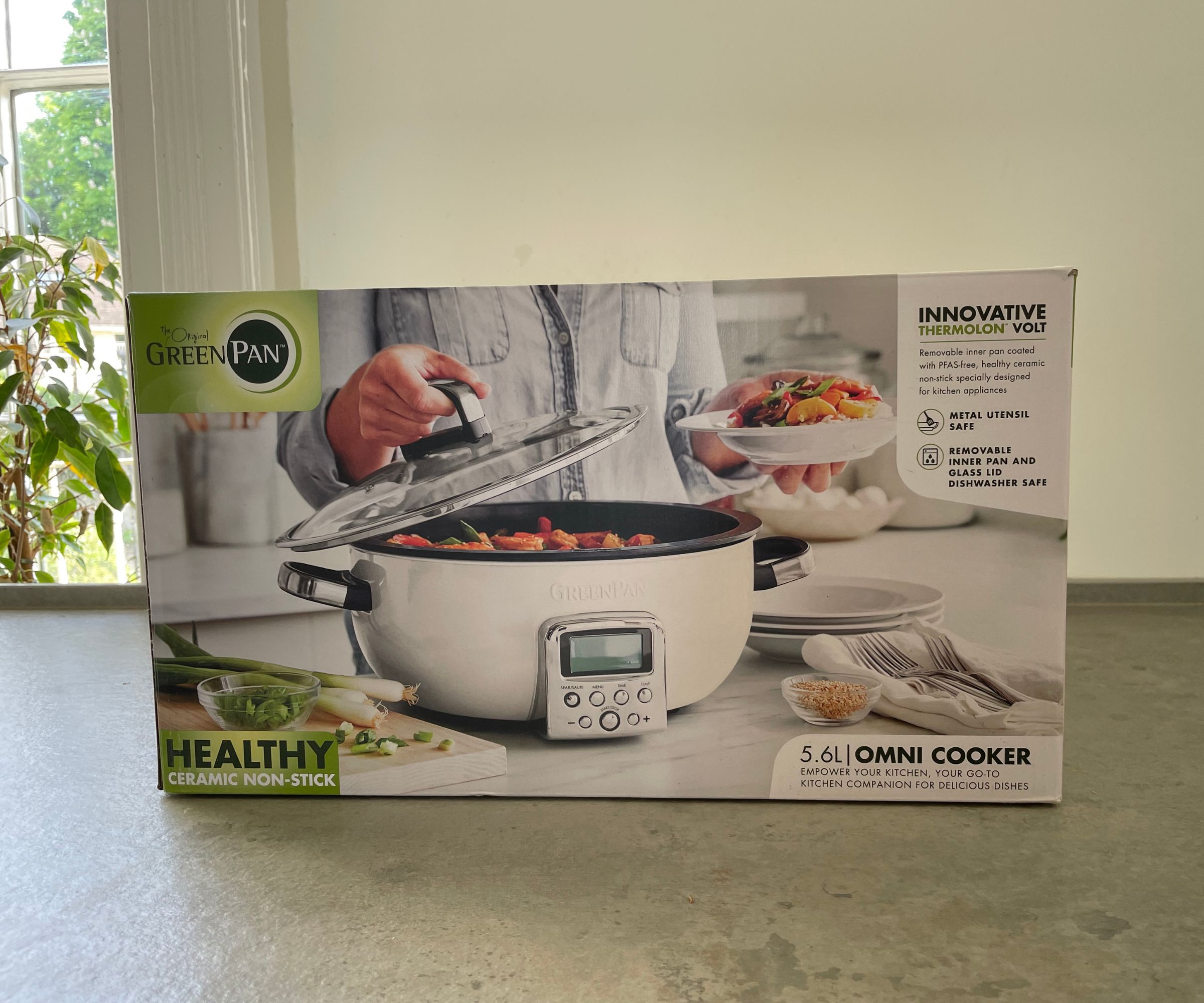
The GreenPan is a more expensive offering on the market. However, given that it can cover eight different functions, the price doesn't seem extortionate. It's also one of the most premium-feeling options too, so you get good value for money.
If you like all the functions and you want to keep your options open, the Instant Pot Pro is a great alternative. It offers the same functions as the GreenPan Omni Cooker. However, you can also pressure cool, sous vide, and even make yogurt. There's almost no price difference (the Instant Pot Pro is cheaper by a few dollars), so it's a matter of personal preference.
Should you buy it?

If you’re looking for a non-toxic, non-stick slow cooker that can cover a range of cooking needs, this is perfect. It’s big enough to satisfy a whole family’s needs without demanding too much space on the countertop.

Laura is our eCommerce editor. As a fully qualified barista, she's our expert in all things coffee and has tested over thirty of the best coffee makers on the market. She has also interviewed Q-Graders and world-leading experts in the coffee industry, so has an intimate knowledge of all things coffee. Before joining Homes & Gardens, she studied English at Oxford University. Whilst studying, she trained as a master perfumer and worked in the luxury fragrance industry for five years. Her collection of home fragrance is extensive and she's met and interviewed five of the world's finest perfumers (also known as 'noses'). As a result of this expansive fragrance knowledge, she always puts quality and style over quantity and fads. Laura looks for products which have been designed simply and with thoughtful finishes.